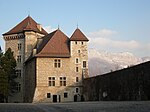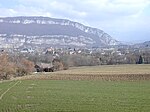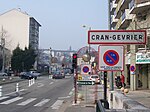Annecy Cathedral
Buildings and structures in AnnecyChurches in Haute-SavoieFrance Roman Catholic cathedral stubsRoman Catholic cathedrals in France

Annecy Cathedral (French: Cathédrale Saint-Pierre d'Annecy) is a Roman Catholic church located in Annecy, France. The cathedral is a national monument. The church was erected at the beginning of the 16th century by Jacques Rossel as a chapel for a Franciscan priory. During the French Revolution, the building was used as a temple of the Goddess Reason. It was raised to the status of a cathedral in 1822, when the Diocese of Annecy was established from the Diocese of Chambéry. The organ of the cathedral was built by Nicolas-Antoine Lété, an organ builder of the French king, in 1840–1842.
Excerpt from the Wikipedia article Annecy Cathedral (License: CC BY-SA 3.0, Authors, Images).Annecy Cathedral
Place de la Cathédrale, Annecy
Geographical coordinates (GPS) Address External links Nearby Places Show on map
Geographical coordinates (GPS)
| Latitude | Longitude |
|---|---|
| N 45.899166666667 ° | E 6.1255555555556 ° |
Address
Cathédrale Saint-Pierre
Place de la Cathédrale
74000 Annecy (Annecy)
Auvergne-Rhône-Alpes, France
Open on Google Maps








